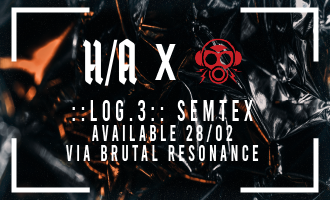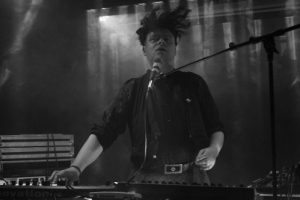
Hello Soft Riot and welcome to Brutal Resonance! I always like to start with this question as it gives me something new to listen to, and it allows our readers to get to know your personal tastes. Anyway, what are three of your favorite albums of all time and why?
Soft Riot: And hello back! Going for the toughest question here first...
I have many favourite records in numerous genres, having started out with random things I listened to as a kid, then getting into punk and hardcore in the 90s and the various waves of the synth and post-punk revival that happened afterward that is still happening and everything in between so there’s a lot of ground to cover.
And my “favourite albums” list is always somewhat different compared to another list I’ve made as it depends what I’m listening to at the time. So for my three favourite albums here, I’m keeping it to in context of three favourite records that I have discovered or have come back to that have had some significance to me over the last year or so:
JAPAN: Gentlemen Take Polaroids (1980)
When I was in my late teens taking on discovery of a lot of bands in of classic post-punk, synth and new romantic era, Japan were a bit slower to catch on with me but nowadays are one of the bands from that period I listen to the most. They were completely doing their own thing, had a unique approach to their instruments and composition, and a very forward-thinking visual style that influenced any number of artists afterwards.
Over the last year or so I read Mick Karn’s biography Japan & Self Existence that my partner had acquired and recommended I read. It was an interesting book and written in a non-chronological order. I found it very relatable and Mick’s writing to be very candid with honest reflection. Japan sort of have a reputation for being difficult and pretentious but to be honest I think they just looked at and did things differently than other bands. They had a natural curiousity for trying new things, even if those things weren’t “in vogue” at the time.
“Gentlemen Take Polaroids” and “Tin Drum” I like both equally, although the former tends to be the moodier and romantic of the two for me, especially the track “Methods Of Dance”.
UNWOUND : Repetition (1996)
In August 2020 an old friend of mine from Seattle, Damien, that I’ve reconnected with over the last few years, sent me a message saying that Vern Rumsey, the bass player from Unwound, had passed away. My initial reaction was one of sadness of course as they were an important band for me in my teenage years. From there I had a couple of weeks where I went down a wormhole listening to their albums, many I haven’t thoroughly listened to in years, along with other artists in that same scene from the time. I then even acquired one of their gorgeous box sets released in the mid-2010s by the Numero Group that I somehow bypassed when those box sets first came out.
Unwound in the simplest description would be “post-hardcore” but obviously that doesn’t do them justice. They were from Olympia, WA, somewhat local to Vancouver where I’m from, and closer to my age group than other established bands at the time. Their moods and style just resonated with me and they’re one of those bands that’s a unique sum of their parts: Justin Trosper’s abstract, discordant guitar figures and disaffected vocals, Vern Rumsey’s driving, gain-driven bass lines and of course the precise, groove-driven and totally identifiable style of drummer Sara Lund — one of my favourite drummers from that era.
ROBERT AIKI AUBREY LOWE : The Vanishing Earth (2020)
Over the past year or so with the complete absence of gigs and clubs and spending a lot more time in our own homes, my interest in listening to upbeat electronic music like minimal wave, synth-pop, EBM has taken a bit of a temporary nosedive. It’s hard to get in that mood when a lot of times you’re limited in what you can do out of your own house with minimal social interaction. And as I have had a long interest in more ambient, low-field music I was listening to more of that over the past year. Makes for good soundtrack material when reading or to aurally augment other things I’m focusing on.
I was aware of Lowe’s post-hardcore band, the Chicago-based 90 Day Men, back at the turn of the millennium and was really into his “psychedelic” ambient project Lichens that followed. Since then he’s been putting out some amazing, electro-acoustic and synth-based “deep listening” material, often using very elaborate modular synth configurations and other unconventional instruments. Music made by an artist with a unique intelligence.
Over the last year he has been putting out quite a lot of material online through his Bandcamp, including this album which gets some listening.
He’s also one of my more obscure “celebrity” sightings, with me years ago being on the top level of a double-decker bus whilst on a weekend in Birmingham, spotting him waiting at a taxi rank with what was likely suitcases of gear. I found later he was playing a festival there at that time I saw him so I wasn’t just seeing things.
Closing this off, I get tagged a lot on social media by friends to contribute what my favourite records are so for a more thorough list of influential records, I did up this list last year when I had some time to kill and was in the mood for writing. It is the “list to trump all lists”, at least from my perspective. You can check it out HERE.
Let’s dive right into it. “Second Lives” unofficially marks ten years of Soft Riot. Tell me, what are some of the highlights of Soft Riot’s life through this past decade? Any favorite memories?
But surprisingly people were interested in that first release and it caught on in a small way so I started putting more focus on it. By mid-2012 I considered Soft Riot to be my main project and moved forward with it on that basis. And from there the style started evolving based in my confidence in my set-up, as I’d never played synths live in that capacity before, and I had a better vision for what I wanted it to be.
With that I’ve had a lot of opportunities that have opened up for me in terms of tours, festivals, travel and releasing records in many countries from around the world. They’re all highlights in what I consider in general to be a very colourful time. And for this I’ve been incredibly grateful for, especially as I’ve always felt as a bit of an outsider in the general synth scene, feeling the music I do is sort of the equivalent of trying to fit a square peg into a round hole so to speak.
But I think the most important memories that have stuck with me doing Soft Riot over the years is meeting many great and wonderful people from around the world from my ability to play places — some of these people I consider really good friends and keep in touch with regularly. It is important to have the ability to share ideas with people, learn new things and to able to see how other people are being creative in the world. With these types of connections, we all feel a bit more empowered to do more as a community in the environment that we all live in.
Now, “Second Lives” is a bit of a compilation piece, collecting songs from all over the place. The first of which is a 2016 cover of Bruce Cockburn’s ‘Lovers in a Dangerous Time’. How has Cockburn influenced Soft Riot and why did you decide to cover this song?
Overall, I don’t really plan to do covers, they just sort of happen, which probably explains why the small amount of cover songs I’ve done are somewhat erratic, mostly by obscure artists the majority of people may not have heard of that had some strong meaning to me over the years. Often it’s a case of hearing the original track when I’m casually listening to it — often just coincidentally — and then it stays in my head, often mutating into something new as it’s on a playback loop in my mind.
Such is the case with “Lovers In A Dangerous” time. The original track has a very angular rhythm figure that dominates the track which I latched onto and spun it into a new direction more in line with my own style.
Strangely enough the first time my first version of this cover was released was on a compilation for the well-known German synth label Young & Cold Records, run by some folks I know in Augsburg. The label has a listening audience that I can almost be entirely sure has no idea who Bruce Cockburn is, mainly has his output has been in a completely unrelated genre and from what I’ve observed has far less reach outside of Canada.
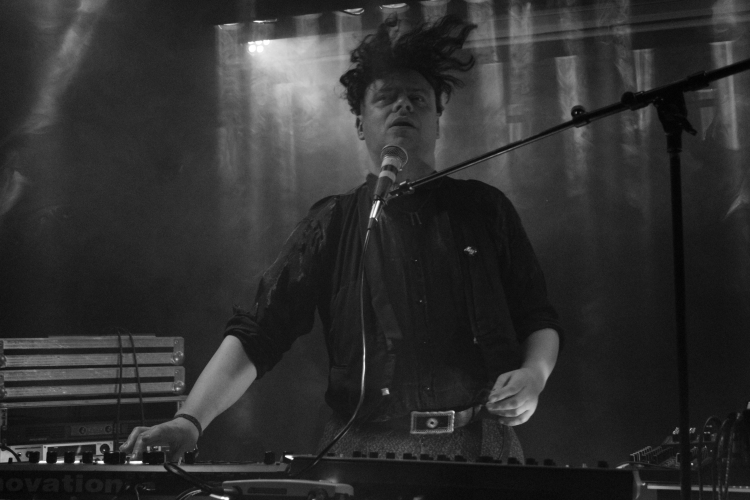
Live photo by Luvidol de Vil.
‘Cinema Eyes’ get another version on the album as well. If the parentheses subtitle is correct, this is the fourth version of the song. Why have you decided to make so many versions of this song in particular?
From that a “Half Releases” version was created for the Croatian label and former zine of the same name around that time, run by my good friend Ivan Antunovic, who currently releases some stellar minimal synth under the name Iv/An on the Tonn Recordings label out of Belfast run by Mary MacIntyre. So I was happy to oblige an exclusive version for that.
Sometimes I develop a track in a few different directions and then sort of settle on finalizing the version that works best.
I still play “Cinema Eyes” a lot in my live set and with eight years of playing it out it sounds a lot different, as my playing and vocal style has evolved over the last eight years so I figured having what is likely going to be the final version of that song being documented.
This “Cinema Eyes (Version IV)” was originally done for another purpose however, having been constructed as a track to contribute to the first “Forbidden Figures” compilation back in November 2020 — a series of compilations curated by my friend: Japanese, Münster-based synth artist Nao Katafuchi who was dealing with a weird copyright issue at the time and started the series to raise funds for his legal fees in dealing with that. That compilation can be found HERE.
There are various other second versions of songs, (‘Another Drone in Your Head’, ‘Write Yourself Into the Void’, ‘We Are The Chopped’) on the compilation as well. I’ve heard other bands say that once a song is done, it’s time to move on. What is your philosophy behind these revisions?
The original idea for this record was just to put a whole bunch of unreleased tracks and demos on a record but as I’m a relatively unknown artist I don’t think that would have really had much appeal: a sprawling collection of half-baked ideas. I mean, I wouldn’t listen to it!
So with that I really thought of what would be the most concise way of taking that concept into something that’s listenable. “Second Lives” itself is only eight tracks and attempts to consolidate the concept of B-Sides, out-of-print cover songs, unreleased tracks and something as close as I’ll ever get to a “greatest hits” compilation into something combined that stands on its own, especially for anyone that’s not really familiar with what I do. The tracks I’ve redone therefore are more reflective of how I play them nowadays, or I’ve taken tracks that are from old albums or out print and have re-worked them a bit, likely as I didn’t like the original versions as much the first time around.
Overall, I have been writing a new album, which I have a lot of ideas for but with the current situation we’re all in I’m find lacking that overall vision for pulling them all together into an album at the moment as I’m just feeling so disconnected from everything. But that will change soon enough. So switching gears to revisiting some old tracks and putting them out on a release that roughly marks ten years of doing Soft Riot ironically felt new, different and refreshing as a bit of a break from the process of writing the next album.
‘Your Back To The Stone’ was originally made for a compilation that never came to light. The compilation you made it for wanted a “martial” style to the track, thus it does come off as one of Soft Riot’s more unique tracks. What was the original writing process for this song like?
Around the same time I was asked to contribute a track for this compilation, I had recently released the 2015 album “You Never Know What Might Come Next”. On that album there’s a track called “Your Back To The Stone” that sort of magically appeared in my head as I felt it had some structure and melody lines that would work when transposing over the style requested for this compilation.
In the end that compilation never really got out of the starting gate so I re-visited what I had done back in early 2016 earlier this year, and re-recorded a number of things with a new mix, having a lot more freedom with it to get it to the version I have now without having to tailor it as much to original criteria I was given when writing it. In the end it’s as much of a synth track as it is something that might loosely fall under “modern classical” or something like that.
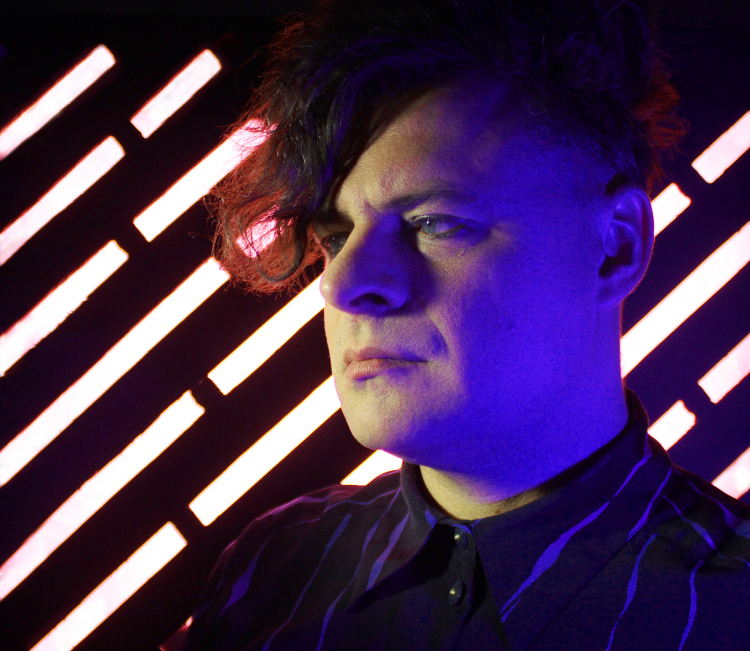
‘Fool For a Day’ and ‘Long And Tangled Throughts’ were meant to be included on “When Push Comes to Shove” and “Chin Up” respectively. However, they didn’t make the cut. How did they stand out from the theme of that album?
With “Long and Tangled Thoughts” I really liked the track when it was written but couldn’t get the mix right in time for the Chin Up release. Although that album is far more minimal in terms of instrumentation — sort of an “ambient synth-pop” record — it was actually a lot more trickier to mix because all the detailing of the instruments stands out more due to its sparseness. So I just came back to that track again for this record and with having a year or two of distance from it, I was able to get it mixed as best as I could this time around.
The artwork is made up of American pioneer of modern dance, Ruth St. Denis, as well as American aviator Helen Richey. How have these two women influenced Soft Riot and why did you decide to include them on the cover art?
As our general society progresses along, history starts revealing more of itself in different ways as a result of a more egalitarian view of what people have done before, despite race, gender, sexual orientation or other categorizations. This is due to how we evolve and increasing accessibility to research and documentation of past events. So for me discovering the stories of Helen Richey and Ruth St. Denis were a “second” discovery as I myself discovered them many years later, which is sort goes with the theme for this album.
What else does Soft Riot have prepared for 2021? Do you have any other albums, EPs, remixes, or singles in the works? Any live shows in the works?
There’s also some remix work, including a track for Logan Sky & Steven Jones. Sky was the synth player/programmer for the last line-up of the classic “new romantic” band Visage and the track I’ve remixed was a later Visage track, including the vocals of Steve Strange. So that, and a number of other remixes I’ve been asked will start seeing the light of day in the coming months.
In July I’ve got a four track EP under the moniker Ostrofti (a non-sensical anagram of “Soft Riot”) called “Sudden Vision Zones” coming out on the new US imprint MediTape. This new label focuses on more meditation, ambient or deep field listening — and as my contribution to this label is far more out on the abstract plane than 2020’s Chin Up, I opted for a different name for this release. Again, another release with some set parameters to work within.
As for live shows, I’m slowly catching onto the idea after all of this time that they’re starting to happen again, and opportunities are starting to present themselves. So as I slowly start to come to terms that “yes, we can all start playing again”, I think over the coming couple of months I’ll be gaining momentum again in terms of planning out where I’ll want to be playing for later 2021 and into 2022 and seeing what places that takes me to. So there’ll be news on what those shows will be coming soon.
Lastly, I’d like to thank you for your time. I leave the space below available for you to mention anything that I may have missed. Cheers!
Actually — there’s one more thing: If anyone out there likes scents I did a collab with Berlin-based perfume/soap maker Seifenhexe (who also doubles as my booking agent) on a Soft Riot perfume called “Fate”. I guess I’ve “made it” now. Ha!
This interview was commissioned through our Ko-fi page.
Get Nazi's out of industrial. It's not cool to be jacking off to Hitler because you were picked on in high school.
Experiment Haywire, Feb 21 2010
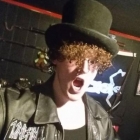
Steven Gullotta
info@brutalresonance.comI've been writing for Brutal Resonance since November of 2012 and now serve as the editor-in-chief. I love the dark electronic underground and usually have too much to listen to at once but I love it. I am also an editor at Aggressive Deprivation, a digital/physical magazine since March of 2016. I support the scene as much as I can from my humble laptop.
Share this interview
Facebook
Twitter
Google+
Shares
Popular interviews
Psyclon Nine
Interview, Mar 24 2017
Night Runner
Interview, Oct 13 2016
Testube
Interview, Apr 02 2022
Kite
Interview, Feb 10 2017
God Destruction
Interview, May 17 2016
Related articles
Hell:Sector - 'The Rise of the Apocalypse'
Review, Jul 04 2014
Scars Are Soulless - 'Vendetta'
Review, Jul 21 2013
Gremnir - 'Sandr Ok Snjár (feat. Naheli and Suvi)'
Review, Sep 03 2023
H.Exe - 'Killing Monsters'
Review, Sep 08 2011
Various Artists - 'Electropop 9'
Review, Jul 01 2014



